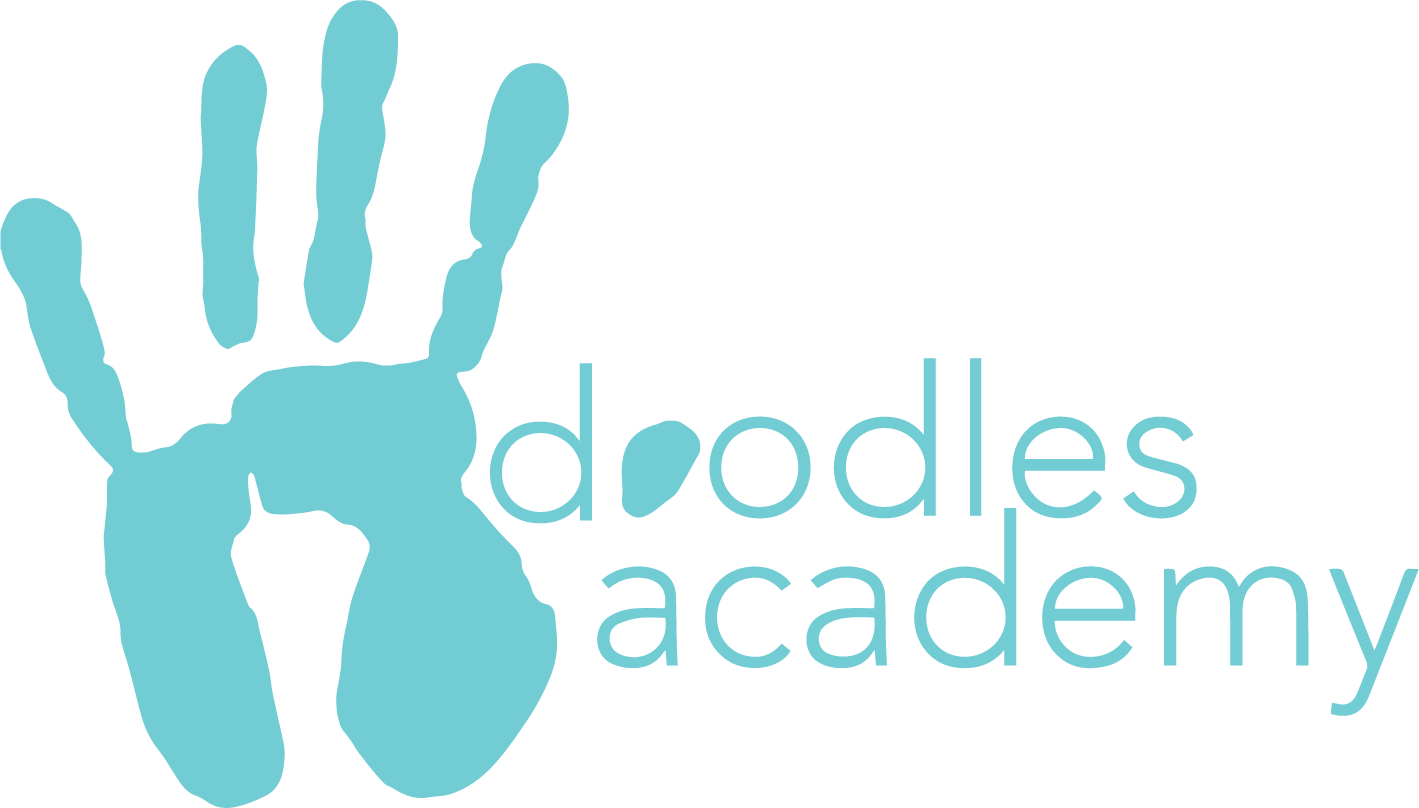The following is a description of what each section of a Doodles Academy Art & Literacy Project typically includes.
Project Contents:
At-a-Glance and Standards: The ‘At-a-Glance’ and ‘Standards’ page gives an overview of the project. Everything on this page is applicable to the project in its entirety. Included on this page are the following sections:
- Synopsis
- Identifies the Literacy Topic this project connects to
- Identifies the grade-level
- A quick summary of the project
- List of Materials
- List of Books/Media
- List of Photocopies needed, with links to the documents
- Knowledge Building (art & literacy packages only):
- Text Set
- Suggested resources from different genre, media, and levels of reading difficulty designed to support knowledge building around the given topic. These are a suggested resource to increase contextual understanding of the literacy topic; the art projects can be done without also introducing text sets.
- Key Vocabulary (art & literacy packages only):
- Tier 2 & Tier 3 Vocabulary
- Text Set
- Standards
- Common Core
- Integrations
- Potential ways this project could integrate with other subject areas
- Connections to known OER content
- National Core Visual Art Standards
- Art Principles
- Art Elements
Typical Lesson Structure:
Each project contains five 45-60 minute long lessons plans. While not without exception, the first four lessons typically follow the same format, and the fifth lesson is used as a workday. In some cases, a teacher may opt to give students an additional workday.
A typical lesson plan includes the following, in the following order:
Overview:
- Synopsis: A quick summary of the lesson
- Objectives
- Set-up: Suggestions for setting up the materials and identifying anything to be prepped or considered in advance of the lesson
- Materials: The materials needed for the lesson. This will often include ‘optional’ materials, with a reference to ‘Early Finishers’. This refers to a section of the lesson plan that gives suggestions for what to do with students who finish ahead of their classmates.
- Photocopies: The photocopies or examples needed for the lesson. Pay attention to the notes for quantity or if the photocopies are optional. As an example, teachers have the option of showing a video to introduce the lesson, or using the notes in the video section and presenting it themselves. If presenting it themselves, they will sometimes need to gather some examples prior to the lesson, and these would be notated in this section.
- Media: Books, websites, etc. that student should be able to reference. Often these will be optional, so pay attention to notes.
- Inspiration Image: A link to an artwork, along with information about the artist and the circumstances around the creation of this artwork. This information can and should be imparted at the teacher’s discretion during the discussion of the inspiration image.
Lesson:
- Inspiration: 10min: Look at and discuss the ‘Inspiration Image’, an art piece that introduces some of the lesson concepts (see inspiration image in the Overview). We suggest that this discussion be based on ‘Visual Thinking Strategy’, an inquiry-based teaching method that encourages students to use visual evidence and build on one another’s observations to discuss an artwork. In this method of teaching, the teacher acts as facilitator, but should remain neutral as the student’s observations guide the discussion.
- Introduction: 5min: Watch the video introduction & check for understanding: Included is a summary of the video introduction and basic instructions. This is for educators who choose to present and demonstrate the material without using the video. In this case, more time should be allotted for the introduction. The video is linked in the project’s scope & sequence, & is alternatively available on the Doodles Academy online platform (doodles-academy.org/project, then navigate to the correct project and lesson).
- Worktime: 20-25min: Identifies whether it is group or independent work-time: Identifies a focus question for the instructor to help frame their interactions with students. Gives suggestions on how to structure work-time, including framing discussions
- Cleanup & Presentations: 5-10min: This section outlines a group activity, discussion, or presentation to do while select helpers clean. Most typically, students share their works in progress and collect respectful feedback from their classmates.
- Anticipated Problems: A section identifying problems that may arise, and how to address them
- Early Finishers: Suggestions for students who finish early
